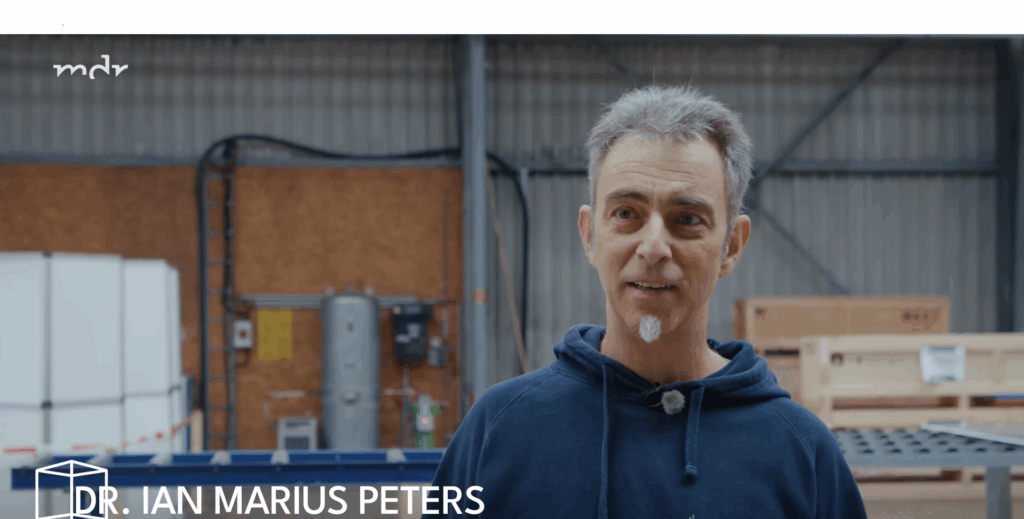FAU Solar member Dr. Ian Marius Peters, the head of the “High Throughput Characterization and Modelling for PV”group at HI ERN, appears as an expert in a new video report on innovative recycling technologies for photovoltaic modules.
In the feature „Erfinder lösen das größte Problem der Solar-Technologie? | Einfach Genial – Wohin mit dem ganzen Solar-Schrott?“, inventor Dr. Harald Groß and entrepreneur Michael Heuschkel present a flash-lamp–based process designed to separate PV modules into their individual components quickly, cleanly and with low energy consumption. Together with Solar-Tech YouTuber Leo Tiedt, they test whether this technology can offer a practical solution to the growing challenge of end-of-life solar modules.
Dr. Peters, who conducts research on sustainable photovoltaics, puts the innovation into scientific perspective. In the video, he discusses how the flash-lamp approach compares to existing mechanical, thermal and chemical recycling methods and to what extent it could become part of future, market-ready recycling systems.
You can watch the video here

FAU Solar member Dr. Ian Marius Peters, the head of the “High Throughput Characterization and Modelling for PV”group at HI ERN, appears as an expert in a new video report on innovative recycling technologies for photovoltaic modules.
In the feature „Erfinder lösen das größte Problem der Solar-Technologie? | Einfach Genial – Wohin mit dem ganzen Solar-Schrott?“, inventor Dr. Harald Groß and entrepreneur Michael Heuschkel present a flash-lamp–based process designed to separate PV modules into their individual components quickly, cleanly and with low energy consumption. Together with Solar-Tech YouTuber Leo Tiedt, they test whether this technology can offer a practical solution to the growing challenge of end-of-life solar modules.
Dr. Peters, who conducts research on sustainable photovoltaics, puts the innovation into scientific perspective. In the video, he discusses how the flash-lamp approach compares to existing mechanical, thermal and chemical recycling methods and to what extent it could become part of future, market-ready recycling systems.
You can watch the video here